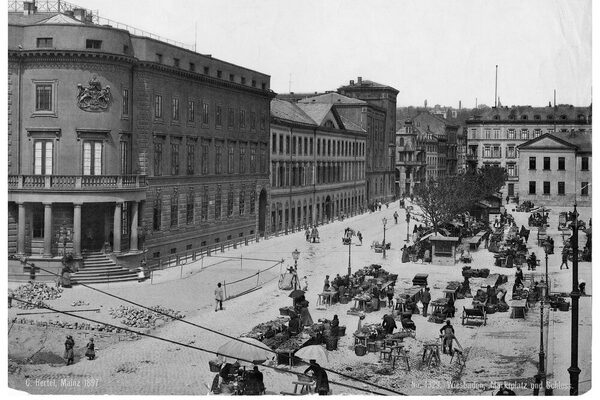Castle Square
The Schlossplatz emerged from what was known as the "Platz" in the Middle Ages. It formed the center of the so-called narrower town and was of considerable size. According to Renkhoff, it served as a refuge for the citizens living outside the walls and the inhabitants of the surrounding villages in the event of danger. From the end of the 15th century, a market was held in the west of the square. The term "market square" for the area was first mentioned in 1572. From 1596, a large part of the former square was used for the new Renaissance construction of the castle and various buildings were built on it. The funnel-shaped extension of Marktstraße between the castle and the old town hall was given the name "Old Market Square". In its center was a plantation of trees, as can still be seen on older maps.
After the construction of the city palace and market church, the area between the Kavalierhaus and the church was renamed "Neuer Marktplatz" (New Market Square). From the time the new palace was built, but especially after the construction of the new town hall and the new school, the market was moved to the rear of the town hall and market church so that the square in front of the palace could be used for troop parades, etc. From 1890, the area between Mühlgasse, Marktkirche and the town hall came to be known as Schlossplatz.
Literature
Spielmann, Christian: Marketplace and surroundings of Wiesbaden in earlier times. In: Alt-Nassau No. 5, 1898 [p. 19 f.].
Sigrid Russ, editor, Denkmaltopographie Bundesrepublik Deutschland. Cultural monuments in Hesse. Wiesbaden I.1 - Historical pentagon. Ed.: State Office for Monument Preservation Hesse, Stuttgart 2005.
Wiesbaden in the Middle Ages. History of the City of Wiesbaden 2, Wiesbaden 1980.
